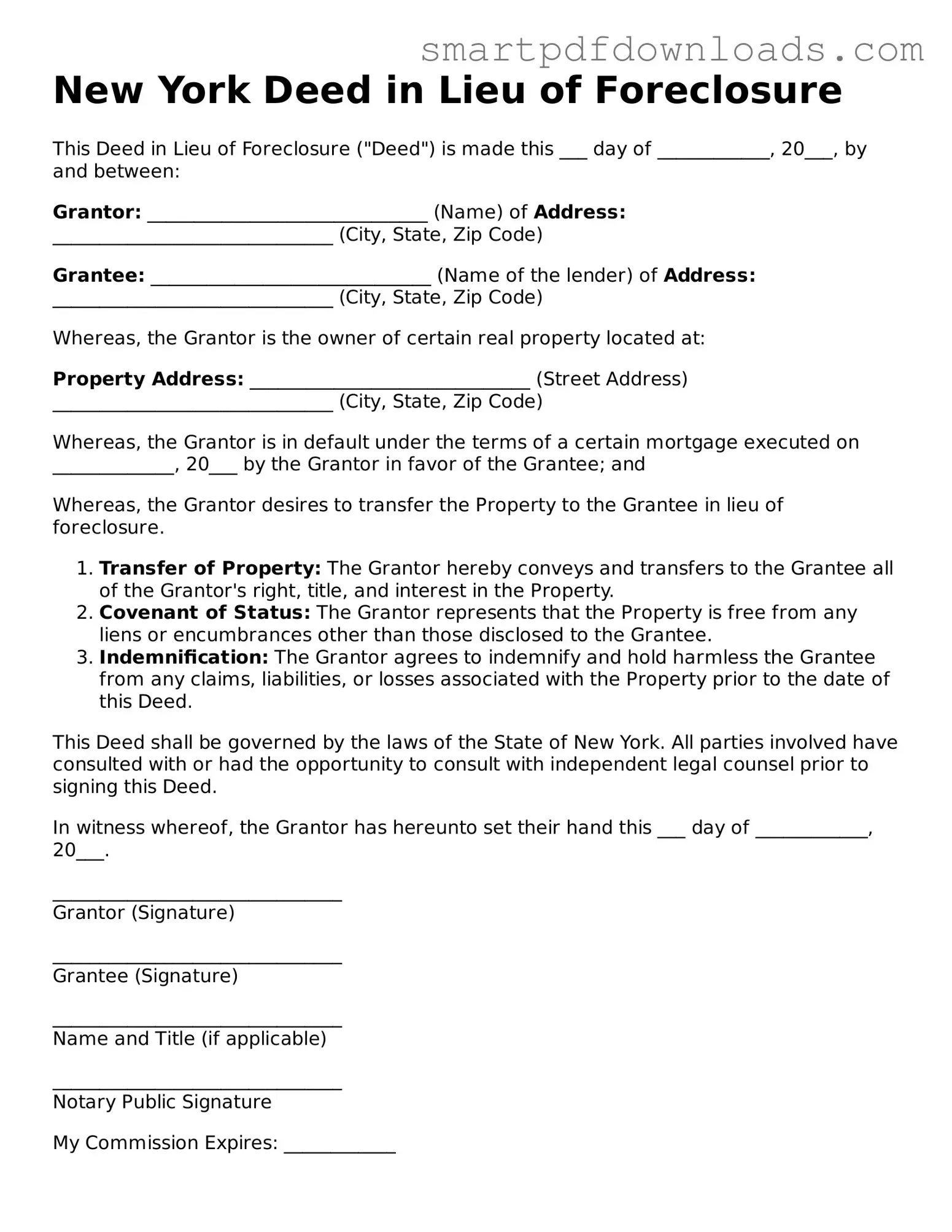New York Deed in Lieu of Foreclosure
This Deed in Lieu of Foreclosure ("Deed") is made this ___ day of ____________, 20___, by and between:
Grantor: ______________________________ (Name) of Address: ______________________________ (City, State, Zip Code)
Grantee: ______________________________ (Name of the lender) of Address: ______________________________ (City, State, Zip Code)
Whereas, the Grantor is the owner of certain real property located at:
Property Address: ______________________________ (Street Address) ______________________________ (City, State, Zip Code)
Whereas, the Grantor is in default under the terms of a certain mortgage executed on _____________, 20___ by the Grantor in favor of the Grantee; and
Whereas, the Grantor desires to transfer the Property to the Grantee in lieu of foreclosure.
- Transfer of Property: The Grantor hereby conveys and transfers to the Grantee all of the Grantor's right, title, and interest in the Property.
- Covenant of Status: The Grantor represents that the Property is free from any liens or encumbrances other than those disclosed to the Grantee.
- Indemnification: The Grantor agrees to indemnify and hold harmless the Grantee from any claims, liabilities, or losses associated with the Property prior to the date of this Deed.
This Deed shall be governed by the laws of the State of New York. All parties involved have consulted with or had the opportunity to consult with independent legal counsel prior to signing this Deed.
In witness whereof, the Grantor has hereunto set their hand this ___ day of ____________, 20___.
_______________________________
Grantor (Signature)
_______________________________
Grantee (Signature)
_______________________________
Name and Title (if applicable)
_______________________________
Notary Public Signature
My Commission Expires: ____________
